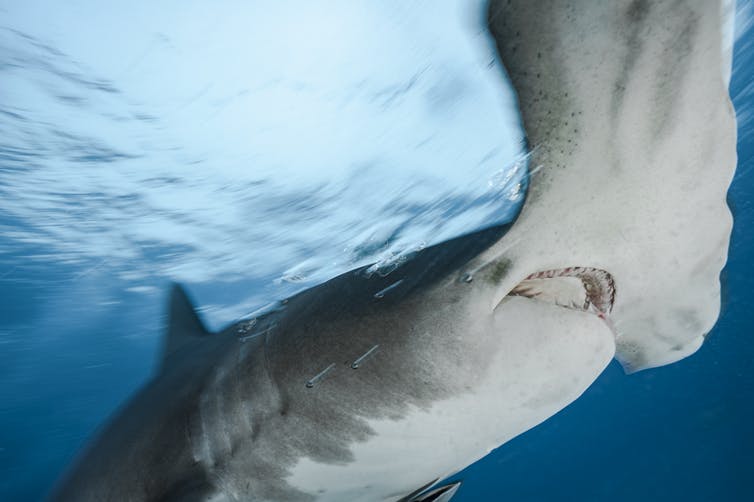
Curious Kids is a series for children of all ages. If you have a question you’d like an expert to answer, send it to [email protected].
Why do hammerhead sharks have hammer-shaped heads? – Landon, age 10
Hammerhead sharks are the strange-looking ones. They look like someone grabbed their skull by the eye sockets and stretched their heads out sideways, while the rest of their bodies look like those of a normal shark.
You might wonder – what are the advantages of having a hammer-shaped head? And how did hammerhead sharks get that way in the first place?
I’m a scientist who has been studying sharks for almost 30 years. The answers to some of these questions have surprised even me.
Benefits of the hammer
Scientists think sharks with hammer-shaped heads have three main advantages.
The first has to do with eyesight. If your eyes were pointing in two opposite directions, say, by your ears, it would give you a much wider field of vision. Each eye would see a different part of the world, so you’d have a better sense of what was around you. But it would be hard to tell how far away things are.
To make up for that trade-off, hammerhead sharks have special sense organs, called ampullae of Lorenzini, scattered on the underside of their hammer. These porelike organs can detect electricity.

If you look closely at this great hammerhead shark (S. mokarran) you can see the sensory pores on the underside of its hammer.
Alexis Rosenfeld/Getty Images News via Getty Images
The pores basically act like a metal detector, sensing and locating prey buried under sand on the ocean floor. Regular sharks have these sensory organs too, but hammerheads have more. The farther apart these sensory organs are on a hammerhead’s stretched-out head, the more accurate they are at pinpointing the location of food.
And finally, scientists think hammers help sharks make quicker turns while swimming. If you’ve ever walked in gusty wind with an umbrella or flown on an airplane, you know how powerful large surfaces can be in motion. If you’re a hammerhead shark, and your intended dinner swims by quickly, you can turn more rapidly to catch it than other fish can.
The hammerhead family tree
It would be nice if scientists like me could look at fossils and trace the development of hammerhead sharks over time. Unfortunately, fossils of hammerhead sharks are almost entirely of their teeth. That’s because the bodies of sharks do not have bones. Instead they’re made of cartilage, which is what your ears and nose are made of. Cartilage breaks down much more quickly than teeth or bones do, so it rarely gets fossilized. And tooth fossils don’t tell us anything about the evolution of hammerhead skulls.
Nine different kinds of hammerhead sharks swim in the oceans today. They vary both in size and in the shapes of their heads. Some have very wide heads…



